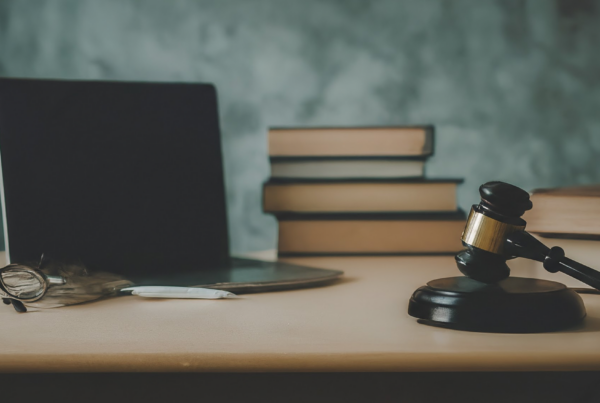In the fast-paced world of commercial video programming, understanding the legal aspects is crucial for businesses aiming to enhance customer experience without legal hiccups. Whether you’re a bustling restaurant, a lively casino, or a multi-location enterprise, navigating the complexities of video programming licensing can be daunting. However, it’s essential to ensure compliance and avoid potential pitfalls that could disrupt your operations.
At DLM Media, we recognize the importance of providing a seamless and engaging entertainment experience for your patrons. Our expertise in commercial video programming solutions is backed by over two decades of delivering reliable and high-quality services. We understand that businesses in the hospitality and entertainment industries need to stay ahead of legal requirements to maintain their competitive edge.
In this blog post, we’ll delve into the intricacies of video programming licensing and compliance. From understanding the various licensing agreements to staying updated with the latest regulations, we’ll provide you with the knowledge needed to make informed decisions. By the end of this article, you’ll be equipped with actionable insights to ensure your business remains compliant and thrives in the ever-evolving digital landscape.
Join us as we explore these vital topics, ensuring your business is prepared to meet the demands of today’s entertainment needs. Let’s embark on this journey to unravel the legal aspects of video programming and enhance your customer experience with confidence.
Understanding Licensing in Video Programming
Licensing is a cornerstone of the legal aspects of video programming, essential for businesses that wish to broadcast content legally. In the hospitality and entertainment industries, understanding the intricacies of licensing agreements is crucial to avoid legal pitfalls and ensure a seamless entertainment experience for patrons. This section delves into the various types of licenses, such as public performance licenses, and their implications for businesses.
Licensing agreements are complex, often involving multiple parties and legal stipulations. For instance, a restaurant or bar that wishes to play music videos or broadcast sports events must secure the appropriate licenses to avoid legal repercussions. These licenses ensure that copyright holders are compensated for the use of their content, protecting both the creators and the businesses that utilize the content.
Types of Licenses in Video Programming
Understanding the different types of licenses is critical for businesses. Here are some common licenses and their purposes:
- Public Performance License: Required for any public exhibition of copyrighted content, such as music videos or films, in a commercial setting.
- Synchronization License: Needed when music is used in conjunction with visual media, such as a commercial or TV show.
- Mechanical License: Allows the reproduction of music in physical or digital formats, often used in conjunction with synchronization licenses.
These licenses are typically managed by licensing bodies such as the American Society of Composers, Authors, and Publishers (ASCAP) and Broadcast Music, Inc. (BMI). These organizations play a pivotal role in ensuring that copyright holders receive fair compensation while facilitating the legal use of content by businesses.
The Role of Licensing Bodies
Organizations like ASCAP and BMI are integral to the licensing process. They provide businesses with the necessary licenses to use copyrighted music and video content legally. By obtaining licenses through these bodies, businesses can avoid costly legal disputes and ensure compliance with copyright laws.
For example, ASCAP and BMI offer blanket licenses that allow businesses to use a wide range of music in their venues. This simplifies the process for businesses, as they do not need to negotiate individual licenses for each piece of music they wish to use.
In addition to music licensing, businesses must also consider licenses for other types of video content, such as sports broadcasts or films. Each type of content may require a different license, and businesses must ensure they have the appropriate permissions to avoid legal issues.
Implications for Businesses
The implications of licensing extend beyond legal compliance. Proper licensing can enhance the customer experience by allowing businesses to offer a diverse range of entertainment options. This can be a significant competitive advantage in the hospitality and entertainment industries.
Moreover, businesses that fail to secure the necessary licenses risk facing legal action, which can result in hefty fines and damage to their reputation. Therefore, understanding and navigating the licensing landscape is crucial for any business that relies on video programming as part of its entertainment strategy.
By partnering with organizations like ASCAP and BMI, businesses can ensure they are compliant with copyright laws while providing an engaging and legally sound entertainment experience for their customers. For more insights into video programming licensing and compliance, explore the resources available at DLM Media.
Compliance with Video Programming Regulations
Ensuring compliance with video programming regulations is crucial for businesses in the hospitality and entertainment industries. These regulations are designed to ensure that video content is accessible to all audiences, including those with disabilities. Compliance not only helps avoid legal pitfalls but also enhances the overall customer experience by making content accessible to a wider audience.
Key regulations include closed captioning requirements and accessibility standards, which are mandated by laws such as the Twenty-First Century Communications and Video Accessibility Act. Businesses must stay updated with these regulations to maintain compliance and avoid potential fines or legal actions. Let’s explore some of the critical aspects of these regulations and how businesses can ensure they meet the necessary standards.
Understanding Closed Captioning Requirements
Closed captioning is a vital component of video programming compliance. It involves displaying the audio portion of a program as text on the screen, providing access to individuals who are deaf or hard of hearing. According to the Federal Communications Commission (FCC), all video programming distributed via Internet protocol must include closed captions if it was broadcast on television with captions.
Businesses must ensure that their video content, whether live, near-live, or prerecorded, complies with these requirements. Failure to provide adequate closed captioning can result in complaints filed with the FCC, leading to potential fines and reputational damage. It’s essential to implement robust systems to manage captioning effectively, ensuring that all content is accessible to viewers with hearing impairments.
Adhering to Accessibility Standards
Beyond closed captioning, video programming must also comply with broader accessibility standards. These standards ensure that all individuals, including those with visual impairments, can access video content. The FCC mandates video description services, which provide audio narratives of visual elements during natural pauses in dialogue, making content accessible to blind or visually impaired viewers.
Businesses should regularly review their content to ensure compliance with these standards. This includes auditing existing content and implementing technologies that facilitate video description services. By doing so, businesses can enhance their inclusivity and avoid potential legal issues related to accessibility non-compliance.
Staying Updated with Regulatory Changes
Regulatory landscapes are constantly evolving, and staying updated with changes is critical for compliance. Businesses should establish a process for monitoring regulatory updates from bodies like the FCC and ensure that their systems and practices align with the latest requirements.
Consider subscribing to industry newsletters, attending relevant webinars, and consulting with legal experts to remain informed about changes in video programming regulations. Proactively adapting to new requirements can prevent compliance failures and the associated consequences, such as fines or legal actions.
- Regularly audit your video content for compliance with closed captioning and accessibility standards.
- Implement systems to manage and update captions and video descriptions effectively.
- Stay informed about regulatory changes by subscribing to industry updates and consulting with experts.
For more detailed guidance on maintaining compliance with video programming regulations, explore the resources available at DLM Media.
Legal Challenges in Video Programming
In the dynamic world of video programming, businesses face a myriad of legal challenges that can impact their operations and profitability. Understanding these challenges is crucial for businesses in the hospitality and entertainment industries, such as casinos, restaurants, and bars, to navigate the complex legal landscape effectively. This section delves into common legal issues like copyright infringement and offers insights into how businesses can protect themselves.
Copyright infringement is a significant concern in video programming. It occurs when copyrighted material is used without permission from the copyright holder. This can lead to costly legal battles and damage to a business’s reputation. To mitigate this risk, businesses must ensure they have the appropriate licenses for the content they broadcast. This includes securing public performance licenses for music videos and sports events, as well as synchronization licenses for using music with visual media.
Copyright Infringement in Video Programming
Copyright infringement remains one of the most pressing legal aspects of video programming. For instance, a restaurant playing unlicensed music videos or a bar broadcasting sports events without the necessary permissions can face hefty fines. The American Society of Composers, Authors, and Publishers (ASCAP) and Broadcast Music, Inc. (BMI) are key organizations that manage these licenses. They ensure that copyright holders receive fair compensation while allowing businesses to legally use their content.
Real-world examples highlight the importance of compliance. In 2018, a popular sports bar faced a lawsuit for broadcasting pay-per-view boxing matches without a license. The court ruled in favor of the copyright holder, resulting in substantial fines for the bar. This case underscores the necessity for businesses to secure the right licenses and avoid unauthorized use of copyrighted material.
Addressing Legal Challenges: Case Studies
Understanding how businesses have addressed legal challenges can provide valuable insights. Consider the case of a multi-location restaurant chain that faced potential legal action for playing copyrighted music without a license. By partnering with ASCAP and BMI, they obtained blanket licenses, allowing them to play a wide range of music legally. This proactive approach not only resolved their legal issues but also enhanced their customer experience by offering diverse entertainment options.
Another example involves a casino that implemented a comprehensive compliance strategy to address video programming regulations. By regularly auditing their content and ensuring all necessary licenses were in place, they avoided legal pitfalls and maintained a seamless entertainment experience for their patrons. These case studies illustrate the importance of proactive measures in mitigating legal risks and ensuring compliance.
Protecting Your Business
To safeguard against legal challenges, businesses should adopt a proactive approach. This includes conducting regular audits of their video programming content to ensure compliance with licensing and copyright laws. Engaging with legal experts and licensing bodies can provide valuable guidance and help navigate the complexities of video programming regulations.
Additionally, businesses should stay informed about changes in the legal landscape. Subscribing to industry newsletters, attending webinars, and consulting with legal professionals can help businesses remain up-to-date with the latest regulations and best practices. By taking these steps, businesses can protect themselves from legal challenges and focus on enhancing their customer experience.
For more insights into navigating the legal landscape of video programming, explore the resources available at DLM Media.
Key Takeaways for Navigating Video Programming Legalities
As we’ve explored throughout this blog post, understanding the legal aspects of video programming is not just a necessity but a strategic advantage for businesses in the hospitality and entertainment sectors. From securing the appropriate licenses to ensuring compliance with accessibility regulations, each step is crucial in avoiding costly legal pitfalls and enhancing customer experience.
To summarize the key points:
- Licensing Types: Ensure you have the right licenses, such as public performance and synchronization licenses, to legally broadcast content.
- Compliance with Regulations: Stay updated with closed captioning and accessibility standards to avoid legal challenges and reach a broader audience.
- Mitigating Legal Risks: Regular audits and partnerships with licensing bodies like ASCAP and BMI can protect your business from copyright infringement claims.
- Proactive Measures: Engage legal experts for tailored advice and stay informed about regulatory changes to maintain compliance.
Understanding these elements will empower your business to navigate the complex legal landscape of video programming effectively. As regulations and licensing requirements continue to evolve, staying informed and proactive is essential. We encourage you to consult with legal experts for personalized advice and visit DLM Media for more resources and insights.
By taking these steps, you can enhance your customer experience and ensure your business thrives in the competitive entertainment industry. Share your thoughts or questions in the comments below and connect with our community to continue the conversation.





